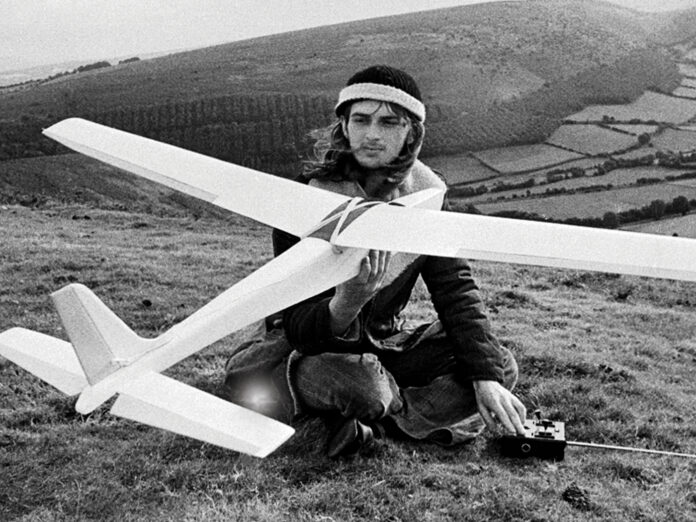The phrase “difficult second album” might have been coined specifically for Mike Oldfield, such was the enormity of his Tubular Bells debut in 1973. A soon to be iconic calling card, it squatted in the UK Top 10 for close to a year, its longevity partially due to a signature passage featuring prominently in The Exorcist that same year; a high profile that (initially, at least) sat awkwardly with its reclusive maker.
The phrase “difficult second album” might have been coined specifically for Mike Oldfield, such was the enormity of his Tubular Bells debut in 1973. A soon to be iconic calling card, it squatted in the UK Top 10 for close to a year, its longevity partially due to a signature passage featuring prominently in The Exorcist that same year; a high profile that (initially, at least) sat awkwardly with its reclusive maker.
His paymasters at Virgin Records were still counting the not-inconsiderable cash from their out-of-leftfield runaway success when Oldfield jumped in his car and drove off to find somewhere conducive to writing a follow-up. He alighted upon Kington, a Herefordshire town of 3,000 inhabitants close to the border with Wales, and in the shadow of the elongated hill that would ultimately give the new LP its title.
The label might have been happy with more of the same, but for Oldfield the intention was perhaps to escape the hullabaloo that went hand-in-hand with being flavour of the month, to turn his back on the noise of it all. In a rare interview for Melody Maker shortly after the second record’s release, he described music industry hub London as “lots of confusion and lots of nasty overtones; things going bang, crash. Hergest Ridge, on the other hand, is smooth, uncluttered. There are no tube trains, very few car doors, lots of open countryside, smooth hills, a general feeling of well-being and non-hysteria.”
Yet there are obvious parallels to be drawn between Tubular Bells and Hergest Ridge; both are split into two “movements”, each occupying the full side of a vinyl LP, both employ repeating motifs, and both feature a “wash” of sound achieved by multi guitar overdubs. The latter, though, is a more of an exercise in serenity, more of a dream-like, bucolic sonic adventure.
Having mapped out the new album’s compositions at his hillside retreat, Oldfield eventually returned to The Manor, the Oxfordshire studio where Tubular Bells was birthed, for the recording process, after shelving initial sessions in London studios. Unlike the overdub frenzy of going it alone on Tubular Bells, his thoughts turned to the debut’s subsequent concert performance and he opted for additional musicians to fully realise the next stage of his career.
Consequently, the pastoral, more atmospherically melancholic passages are achieved by enlisting oboe, flute and trumpet players, and a “choir” (in practice, two multi-tracked voices, one of which is his sister, Sally). Oldfield adds vintage Farfisa and Lowrey organs to the many instruments he plays himself, resulting in warmer textures than were evident on the record’s more precise and clinical forebearer.
Overall, the modus operandi of Hergest Ridge is less concerned with earlier triumphs than it is in expressing Mike’s own inner peacefulness via an elegant collage of sound that largely evokes images of the English landscape, of a paradisaical safe space for fellow souls of an introspective bent. In that respect, the album could be interpreted as a form of autobiography.
There’s a greater accent on melody here as well, with sections of “Part Two” floating into mood movie music territory, as if A-list film score composers the stripe of Elmer Bernstein or Jerry Goldsmith have been filtered through traditional English folk mores. The shift towards electric guitars and synths around the eight-minute mark sounds jarring at first, but it’s indicative of Oldfield’s desire to surprise or even wrong-foot the listener.
This anniversary edition, in its deluxe incarnation, brings together the original LP mix, the ’76 mix for quadrophonic hardware, Oldfield’s own 5.1 Surround Sound mix from 2010, and a brand new Dolby ATMOS mix by DJ/producer David Kosten, whose own releases under the name Faultline have included collaborations with The Flaming Lips, Michael Stipe and Chris Martin.
In truth, the variations on offer might result in a game of frustratingly futile ‘spot the difference’ for more casual listeners, but there are intriguing pockets revealed by Oldfield’s 2010 return to the source material. A palpable separation of specific instruments comes to the fore, elements that were arguably obscured due to available technology when the original album was being readied for public consumption.
Inevitably, maybe, the juggernaut of Tubular Bells means Hergest Ridge will always be seen as the lesser sibling, the exercise in consolidation that builds on its predecessor by adding a few new flourishes while mindful that a modicum of familiarity is a wise path to follow. As expected, it was a huge success, although its three weeks at Number One in the UK were ended when Tubular Bells returned to the top of the charts, casting the shadow that still exists today.
When you purchase through links on our site, we may earn an affiliate commission. Here’s how it works.



